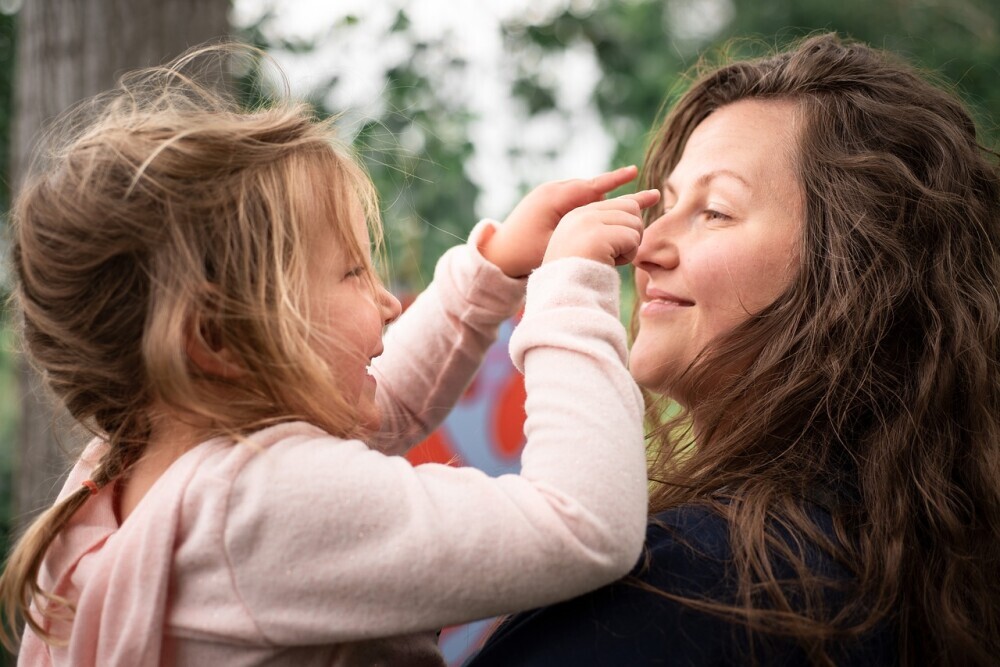How To Discuss Spiritual Dreams With Your Child
Dreams. They’re like this incredible playground of the mind where anything can happen. For kids, dreams can be magical, spooky, or downright confusing. But why do they matter? They play a significant role in how kids make sense of the world.
When discussing spiritual dreams, we’re diving into a space where the every day and the mystical intersect. This is where meanings entwine and can illuminate things that a child might not easily express in waking life.
Talking about dreams can be a bridge—uniquely connecting you and your child. It’s a chance to step into their inner world, see life through their eyes, and explore what might be more than just a nighttime adventure. So prepare to embark on this charming path where you and your child can discover and grow together.
Understanding Children’s Dreams
 Children have a variety of dreams, and not all dreams are the same. To help your child feel more secure in discussing their dreams, it’s helpful to understand the different types of dreams they may experience.
Children have a variety of dreams, and not all dreams are the same. To help your child feel more secure in discussing their dreams, it’s helpful to understand the different types of dreams they may experience.
Normal dreams are often a reflection of daily life.
They might include elements from a movie your child watched, a game they played, or recent conversations. These dreams are random yet tied to their everyday experiences.
Then, there are recurring dreams.
These usually involve a similar storyline or setting that repeats over time. They can sometimes indicate a concern or fear that your child hasn’t fully processed. Discussing these can help them work through whatever’s on their mind.
And let’s not forget spiritual dreams.
These might carry more weight for your child, intertwining the magical with the mysterious. Often filled with symbolic elements, they can be an area where deeper feelings or intuitive understandings appear.
Imagination is a wild beast in the dream world. It’s even more vivid for kids because their creative minds are less bound by logic. Dreams often reflect this unhindered imagination, filled with fantastic elements that shouldn’t always be taken at face value. Exploring these themes can help you learn more about what fuels your child’s imagination and emotional world.
Why Spiritual Dreams Matter
 Spiritual dreams hold a special place in the mystical realm of nighttime adventures. These dreams often resonate deeply with kids, carrying messages that might not be overtly apparent.
Spiritual dreams hold a special place in the mystical realm of nighttime adventures. These dreams often resonate deeply with kids, carrying messages that might not be overtly apparent.
So, what exactly are spiritual dreams? Think of them as dreams that go beyond the ordinary. They might reveal something about a child’s emotional life or personal growth. For example, encountering a wise figure or experiencing peace in their dream could indicate innermost feelings or desires looking for expression.
When accepted, these dreams can guide a child towards self-discovery and emotional intelligence, helping them process their experiences in a way that their awake life may not.
By encouraging conversations about these dreams, you’re nurturing their spiritual growth and strengthening their ability to make sense of their inner world. It’s an opportunity to help them realize that these dreams might be whispers of wisdom steering them in daily life.
Creating a Safe Environment for Dream Discussions

It is crucial to create a space where your child feels comfortable enough to chat about their dreams. Kids need to know they won’t be laughed at or dismissed, no matter how wild or strange their dream stories may be. Letting them know you’re genuinely interested and available is a good place to start.
One key factor is honesty—showing empathy when they share and validating their feelings. Remember that emotions shouldn’t be dismissed even if the dream seems outlandish. Instead, gently explore what the dream might mean to them.
Building a fortress of trust is a must. Keeping reactions non-judgmental and open allows your child to navigate their dream world freely. This means setting aside time for these conversations making it known that this is as important as any other topic you discuss.
Sometimes, it’s not easy for kids to find the words. Encourage them by asking open-ended questions or reflecting on the parts of the dream that seem to stand out emotionally. Reinforce that what they share is important and worth discussing, regardless of content.
Listening: The Key to Understanding
 Being a good listener isn’t just about hearing the words; it’s about tuning into your child’s words. Engaging with their dreams requires you to be present and focused on them.
Being a good listener isn’t just about hearing the words; it’s about tuning into your child’s words. Engaging with their dreams requires you to be present and focused on them.
Offer your undivided attention.
Put away distractions like phones or the TV. Your child will notice and appreciate your effort to fully engage with them, reinforcing that their thoughts and dreams are important.
Ask gentle, open-ended questions to guide the conversation gently.
For instance, ‘What part of the dream felt most important to you?’ Let them lead the exploration of their dream worlds, only nudging when necessary.
Silence is powerful, too.
Sometimes, being there without interrupting as they reflect on their dream is all that’s needed. Giving them the room to find the right words can be as valuable as anything you might say.
Active listening also involves affirming their experiences.
Simple acknowledgments like nods, repeating back key points, or empathetic comments show you’re genuinely engaged. This makes it easier for them to open up and share everything on their mind.
Decoding Symbols and Themes
 Dreams often speak a curious language of symbols and patterns that can be a puzzle. For kids, this could be anything from a cat that talks to a rainbow leading somewhere unexpected. Exploring these elements with them can be both enlightening and entertaining.
Dreams often speak a curious language of symbols and patterns that can be a puzzle. For kids, this could be anything from a cat that talks to a rainbow leading somewhere unexpected. Exploring these elements with them can be both enlightening and entertaining.
Discuss common symbols.
Animals, for example, often pop up in dreams and can represent various emotions or traits. Encourage your child to describe what these symbols mean to them personally.
Identifying themes or recurring elements is another key part of understanding dreams. These are certain feelings, settings, or characters that appear frequently. By connecting these dots, your child can begin to see patterns, helping them make sense of what their subconscious is trying to say.
Invite your child to draw or write about their dreams.
Sometimes, putting these dreams into another form helps in processing them. It also offers an opportunity for further conversation and exploration together.
Remember, the aim isn’t to provide definitive interpretations but to guide your child in finding the personal meanings behind dream symbols and themes. By doing so, you’re fostering their intuition and self-awareness.
Exploring Personal and Cultural Significance
 Dreams often intertwine with personal beliefs and cultural narratives, providing an opportunity to deepen conversations with your child. Encourage them to connect elements of their dreams with what they know or believe.
Dreams often intertwine with personal beliefs and cultural narratives, providing an opportunity to deepen conversations with your child. Encourage them to connect elements of their dreams with what they know or believe.
Introducing your child to various cultural stories or traditions related to dreams can enrich their understanding. Sharing tales from diverse cultures highlighting dream themes can provide fresh perspectives and increase global awareness.
Explore how certain dream elements may resonate with your child’s experiences or family traditions. Recognizing these connections can empower them to view dreams as a bridge between their internal world and daily life.
Unlocking cultural significance doesn’t mean you need to have all the answers. Sometimes, it’s enough to engage in honest discussions, sharing curiosities or uncertainties. This way, you and your child learn more about the world around them.
Teaching Emotional Reflection Through Dreams
 Dreams are a fantastic tool for kids to tap into their emotions. When children connect what they dream about with their waking feelings, they explore those buried bits that might not otherwise be revealed.
Dreams are a fantastic tool for kids to tap into their emotions. When children connect what they dream about with their waking feelings, they explore those buried bits that might not otherwise be revealed.
Guide your child in understanding how emotions in dreams can mirror their real-life feelings. If a dream made them scared or jubilant, try relating these feelings to recent experiences or events. This connection teaches them to reflect on emotions thoughtfully.
Inspire them to view dreams as a safe place to work through emotions. This can be empowering, especially if they’re navigating stress or anxiety. Helping them identify emotions tied to dream scenarios allows them to practice emotional intelligence, learning to process what they’re experiencing.
Incorporating dreams into these emotional lessons supports your child’s emotional growth and equips them with coping strategies for life’s inevitable challenges. This way, dreams become more than occasional nighttime stories—they’re gateways to understanding and managing emotions effectively.
Encouraging Exploration and Growth
 Dream journaling can be a fun, creative activity for kids. Encourage them to note their dream adventures as soon as they wake up. Keeping a dream journal captures fleeting details and enhances self-discovery and personal growth.
Dream journaling can be a fun, creative activity for kids. Encourage them to note their dream adventures as soon as they wake up. Keeping a dream journal captures fleeting details and enhances self-discovery and personal growth.
Supportive conversations about dreams can fuel a child’s curiosity and lead to broader interests. Whether learning about dream science or exploring spiritual traditions, a whole world of knowledge is waiting to be discovered.
You nurture their spiritual development by helping your child find links between their dreams and personal experiences. This is a chance for them to explore who they are, what they care about, and how their mind works.
Centering dreams in daily life builds a foundation for a lifelong interest in self-exploration and understanding. Through dreams, you’re opening doors to endless opportunities for learning and wonder.
Your role is about guiding, not dictating. Be there to offer insights and share your curiosities, allowing them to lead their exploration. This approach plants the seeds for continuous growth and a healthy, open mindset.

